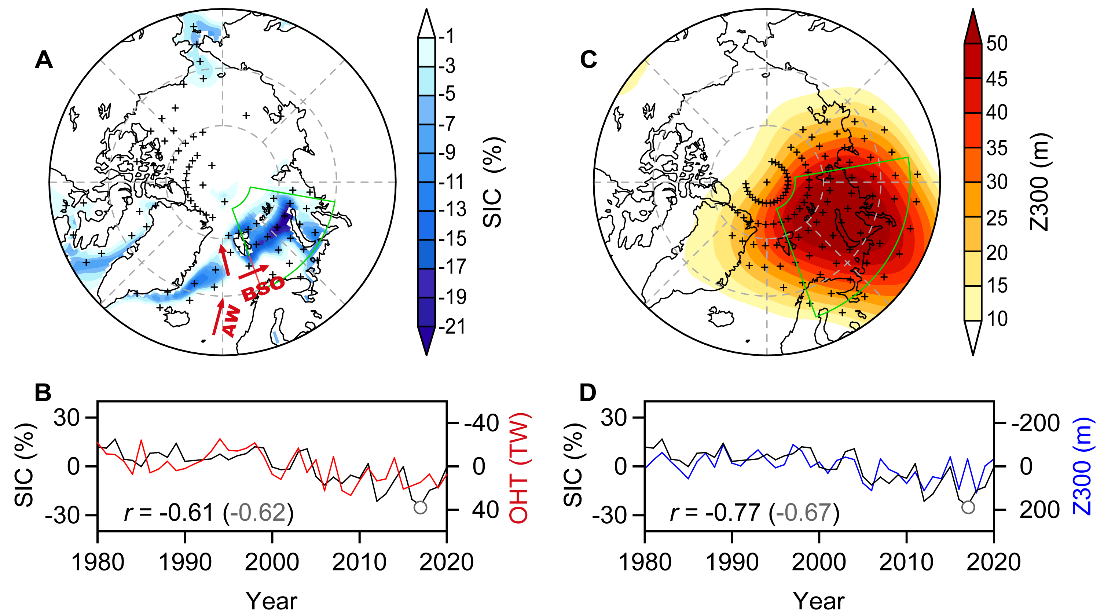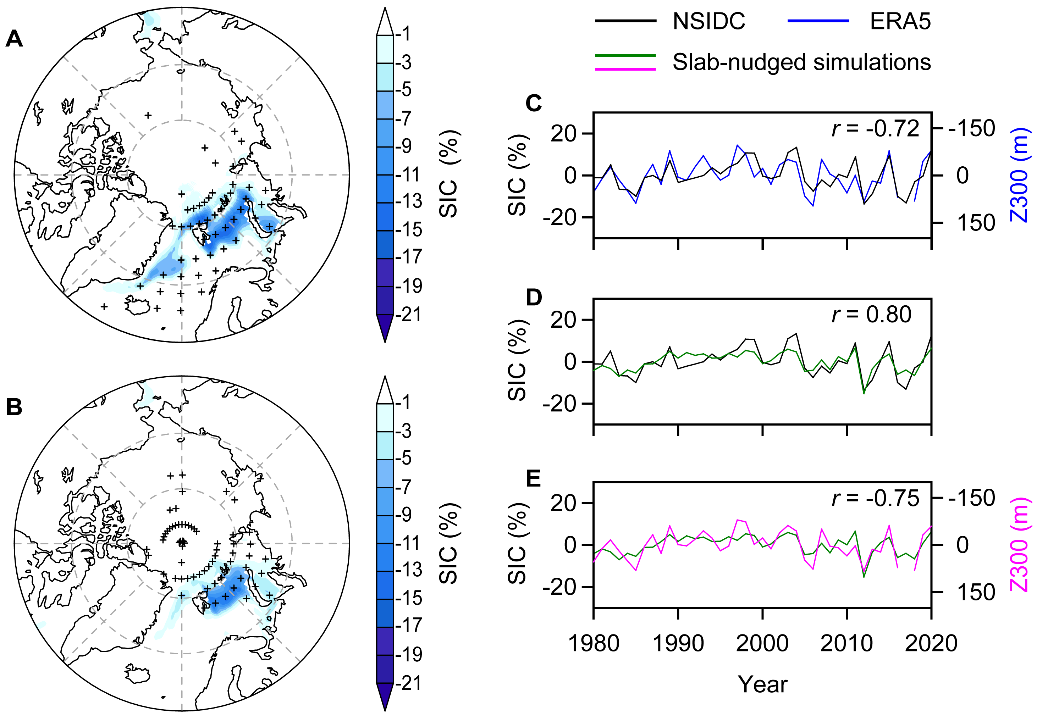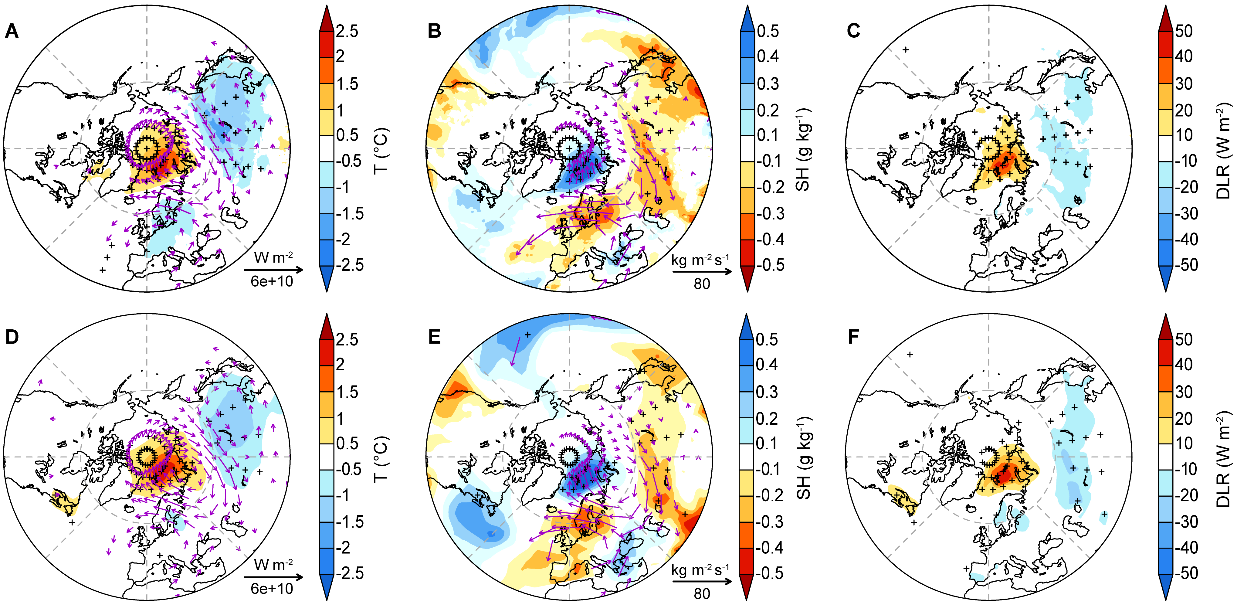Recently, Proceedings of the National Academy of Sciences (PNAS) published the research results of Professor LIU Zhongfang and his collaborators in the State Key Laboratory of Marine Geology of Tongji University online under the title of "Atmospheric forcing dominates winter Barents-Kara sea ice variability on interannual to decadal timescales", revealing the leading role of atmospheric forcing in the process of Arctic winter sea ice melting.
In the summer of 2022, extreme heat waves swept over many countries and regions in the Northern Hemisphere. From East Asia and North America to Europe, they experienced record-breaking continuous high temperatures. Even the cold Arctic was not spared, and high temperatures above 32 ℃ appeared. Climate change is changing the planet on which we live, especially in the Arctic, where sea ice is shrinking at an unprecedented rate in the past millennium due to accelerated warming. According to satellite observations, since 1979, the Arctic sea ice coverage in summer has decreased by 40%. It is estimated that the Arctic will be ice-free in summer by the middle of this century or earlier. Because of the accelerated retreat of sea ice, the Arctic is entering a new climate state, which scientists call the "New Arctic". The emergence of the "New Arctic" not only changed the ecology and environment of the Arctic region, but also affected the weather and climate in mid-latitude, even the world, through large-scale air-sea circulation.
Compared with the sea ice change in summer, the academic circle and the public generally pay less attention to the sea ice in winter, mainly because its change and trend are very small. However, this situation is changing quietly since this century. Satellite observations show that the Arctic winter sea ice has decreased rapidly since 2005, especially in the Barents Sea Kara Sea (BKS) region. Its reduction rate is almost the same as that in summer, contributing to more than 1/3 of the Arctic winter sea ice change, and becoming a hot spot with the fastest melting and strongest warming in the whole Arctic winter. What causes the sea ice of BKS to disappear? Recent studies suggest that the ocean and atmospheric circulation play an important role, but the intensity of their respective effects is controversial.

Figure 1. (A) Linear trend of winter sea ice concentration (SIC); (B) North Atlantic warm water transport flux (OHT) and BKS SIC anomaly time series; (C) Regression between atmospheric circulation anomaly (Z300) and BKS SIC index; (D) BKS SIC and Z300 Anomalous Time Series

Figure 2. Response of SIC of observation (A) and simulation (B) to atmospheric circulation (Z300); (C) Observed BKS SIC and Z300 anomaly time series; (D) Observed and simulated BKS SIC anomaly time series; (E) Simulated BKS SIC and Z300 Anomalous Time Series
In response to the above problems, LIU Zhongfang and his collaborators used satellite observations, ocean and atmosphere reanalysis data, and numerical simulation to find that atmospheric forcing dominated the Arctic winter sea ice ablation, explaining more than half of the interannual sea ice changes (Figures 1 and 2). In the winter of the Northern Hemisphere, the Eurasian Sea Basin is controlled by the continuously enhanced anticyclone circulation (Figure 1C), which expands the heat and water vapor transport in the region, leading to an increase in temperature and downward longwave radiation, and accelerating the sea ice melting (Figure 3). Under the background of future warming, the anticyclone circulation will continue to strengthen, further intensifying the melting of Arctic sea ice. The study clarified the relative contribution of atmospheric and oceanic processes to winter sea ice melting and the causal relationship between sea ice melting and atmospheric circulation. At the same time, it explained the causes of extreme weather and climate events in mid-latitude under the background of the Arctic amplification effect.

Figure 3. Response of observed (A-C) and simulated (D-F) thermodynamic processes to atmospheric circulation (Z300) (A and D) heat transfer and temperature; (B and E) Water vapor transmission and humidity; (C and F) downward longwave radiation
The first and corresponding author of the paper is Professor LIU Zhongfang from the State Key Laboratory of Marine Geology of Tongji University. The cooperative units include Sorbonne University of France, Sun Yat-sen University, National University of Singapore, the University of Michigan of the United States, Institute of Atmosphere of the Chinese Academy of Sciences, the Second Institute of Oceanography of the Ministry of Natural Resources, and the University of Utah of the United States. This research was supported by the general program of the National Natural Science Foundation of China and the Foundation for Distinguished Young Scholars.
Paper link: https://www.pnas.org/doi/10.1073/pnas.2120770119